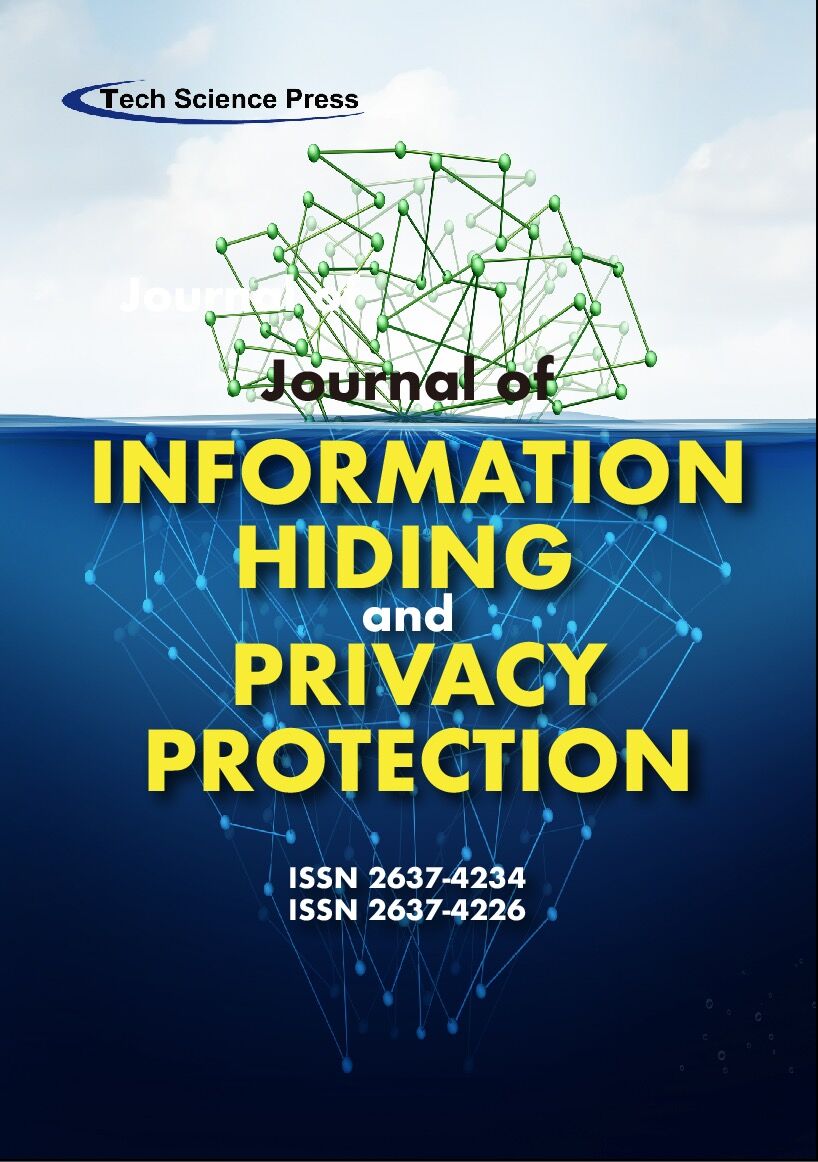
Journal of Information Hiding and Privacy Protection focuses on original papers addressing novel ideas, issues, theoretical analysis, implementation, experimental results, systems and applications in the field of Watermarking, Data Hiding, Multimedia Security, and Privacy Protection.
 Open Access
Open Access
ARTICLE
Journal of Information Hiding and Privacy Protection, Vol.7, pp. 45-60, 2025, DOI:10.32604/jihpp.2025.066524 - 31 July 2025
Abstract Rapid advances in computer vision have enabled powerful visual perception systems in areas such as surveillance, autonomous driving, healthcare, and augmented reality. However, these systems often raise serious privacy concerns due to their ability to identify and track individuals without consent. This paper explores the emerging field of identity-hiding visual perception, which aims to protect personal identity within visual data through techniques such as anonymization, obfuscation, and privacy-aware modeling. We provide a system-level overview of current technologies, categorize application scenarios, and analyze major challenges—particularly the trade-off between privacy and utility, technical complexity, and ethical risks. More >
 Open Access
Open Access
ARTICLE
Journal of Information Hiding and Privacy Protection, Vol.7, pp. 33-44, 2025, DOI:10.32604/jihpp.2025.067510 - 31 July 2025
Abstract This work presents an encryption model based on Generative Adversarial Networks (GANs). Encryption of RTF-8 data is realized by dynamically generating decimal numbers that lead to the encryption and decryption of alphabetic strings in integer representation by simple addition rules, the modulus of the dimension of the considered alphabet. The binary numbers for the private dynamic keys correspond to the binary numbers of public reference keys, as defined by a specific GAN configuration. For reversible encryption with a bijective mapping between dynamic and reference keys, as defined by the GAN encryptor, secure text encryption can… More >
 Open Access
Open Access
REVIEW
Journal of Information Hiding and Privacy Protection, Vol.7, pp. 1-31, 2025, DOI:10.32604/jihpp.2025.060898 - 27 March 2025
Abstract Steganography, the art of concealing information within innocuous mediums, has been practiced for centuries and continues to evolve with advances in digital technology. In the modern era, steganography has become an essential complementary tool to cryptography, offering an additional layer of security, stealth, and deniability in digital communications. With the rise of cyber threats such as hacking, malware, and phishing, it is crucial to adopt methods that protect the confidentiality and integrity of data. This review focuses specifically on text-in-image steganography, exploring a range of techniques, including Least Significant Bit (LSB), Pixel Value Differencing (PVD),… More >